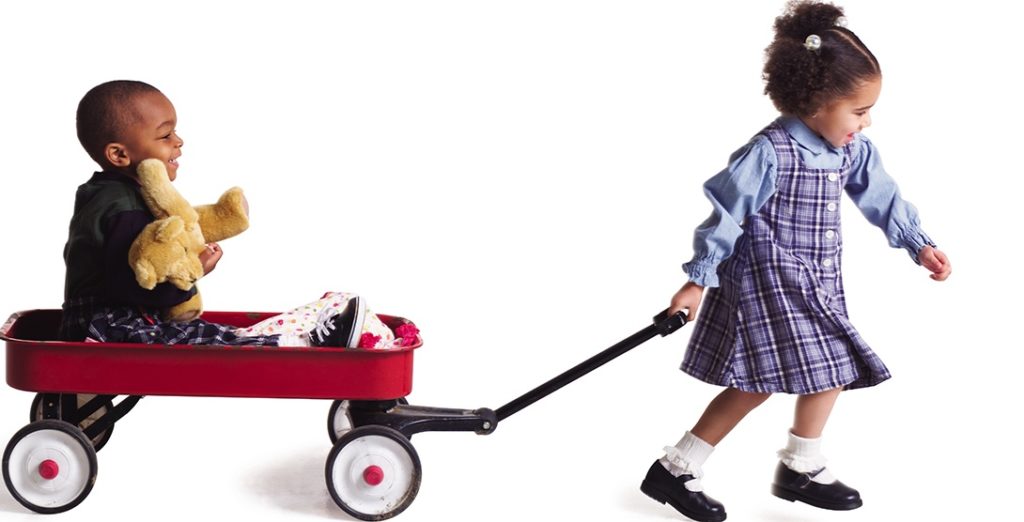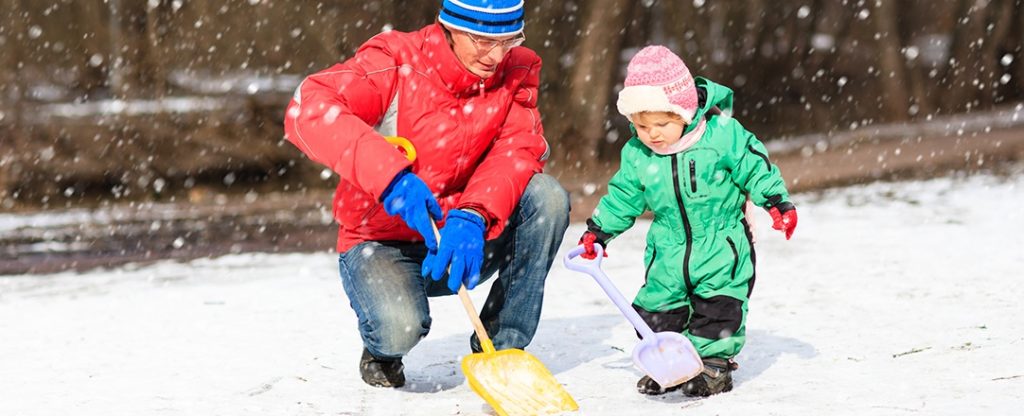Encourage active play every day
Young children need lots of time to move their bodies—at home, at daycare, and in preschool. Movement helps children develop motor skills, which are important to all other areas of development—language, cognition, social, emotional, and adaptive skills. Children need encouragement, instruction, and opportunity to develop their motor skills. Help support this by practicing these tips.

Teach your kids how to move
Movement skills don’t always develop naturally. Try purposefully including movements such as the ones below in your play time with children:
- Up to 1 year old: stretching, patting, grasping, releasing, creeping, crawling
- 1 to 2 years old: clapping, grabbing, squeezing, pressing, stamping, pushing, pulling, jumping
- 2 to 3 years old: twisting, balancing, waddling, climbing, marching, rolling, sliding, turning
- 3 to 4 years old: hopping, tossing, galloping, jumping, slithering, darting, bouncing, trudging
- 4 to 5 years old: tumbling, running, galloping, prancing, skipping, throwing, catching, tip-toeing, bending, stretching, collapsing, sneaking, trotting, kicking, batting

Choose toys that promote movement
Depending on the age of your child, there are different toys to consider.
- Up to 1 year old: floor mirrors, crib gyms, snap lock beads, push and pull toys, low climbing platforms
- 1 to 2 years old: activity tables, bean bags, tunnels, large balls, ride on toys (no pedals)
- 2 to 3 years old: wagon/wheelbarrow, spinning seat, hopper balls, rocking horse
- 3 to 4 years old: foam flying disks, soft baseball and bat, adult-like push toy (lawnmower, vacuum, etc.), double blade ice skates, ribbon wands
- 4 to 5 years old: climbing ropes, kite, jump rope, Velcro catching mitt, junior size sports equipment (soccer ball, football, batting tee, etc.)
Make family/group time active
Have fun being active together. Try these ideas:

- Schedule active family play into your routine so it doesn’t get missed.
- Play active games such as Twister, red light/green light, Simon says, charades, tag.
- Act out your favorite stories.
- Go on a walk or hike.
- Set up an obstacle course in your home, garage, or yard.
- Dance to music.
Adapted from Let’s Go! Make Physical Play Part of Every Day. Download a printable copy to share with others.
Older children need physical activity, too
Even school-aged children need at least one hour of physical activity every day. Active children are healthier and do better in school. Find out what innovative schools are doing to exercise students’ bodies and minds at the same time in our guide, Active Students Achieve More: 3 Ways to Get Kids Moving in School.

Topics: Outdoor Activity, Physical Activity
Subscribe for more
Want more ideas for healthy schools, workplaces, child care providers, and families? Subscribe to our blog for weekly tips delivered right to your inbox!
Exploring the Role of the Business Community in Improving Health NEXT »
Healthy Places: embedding healthy nutrition and physical activity policies in everyday settings
